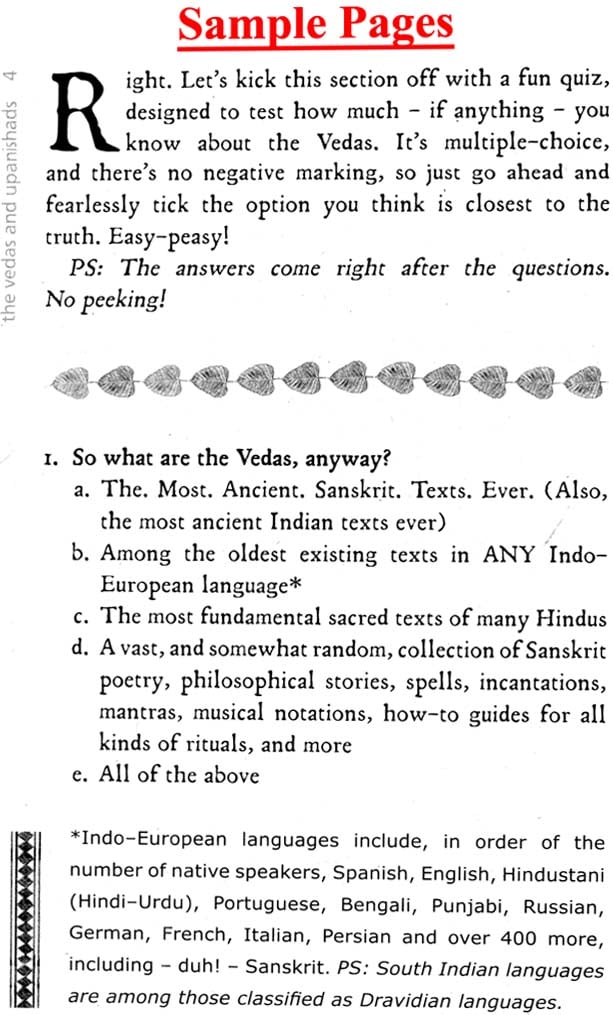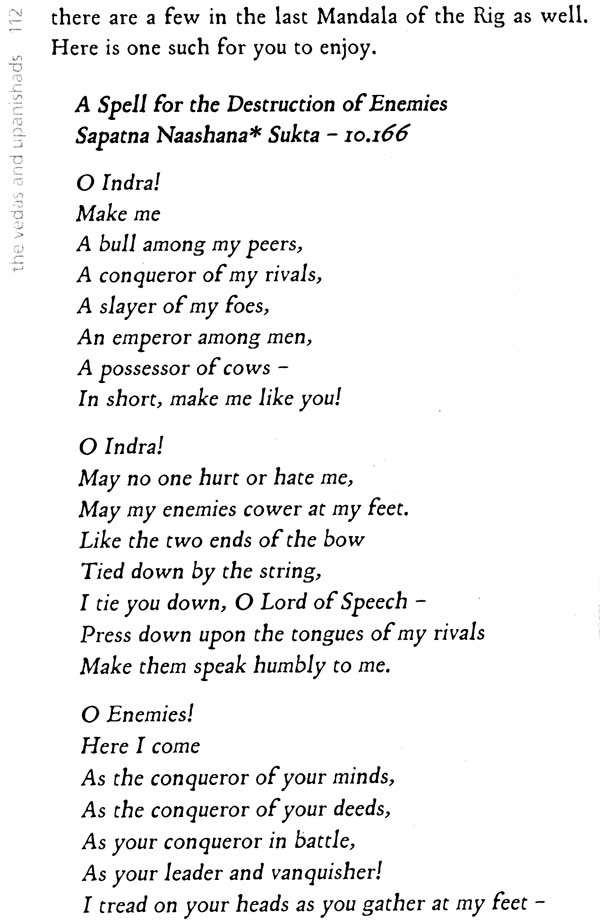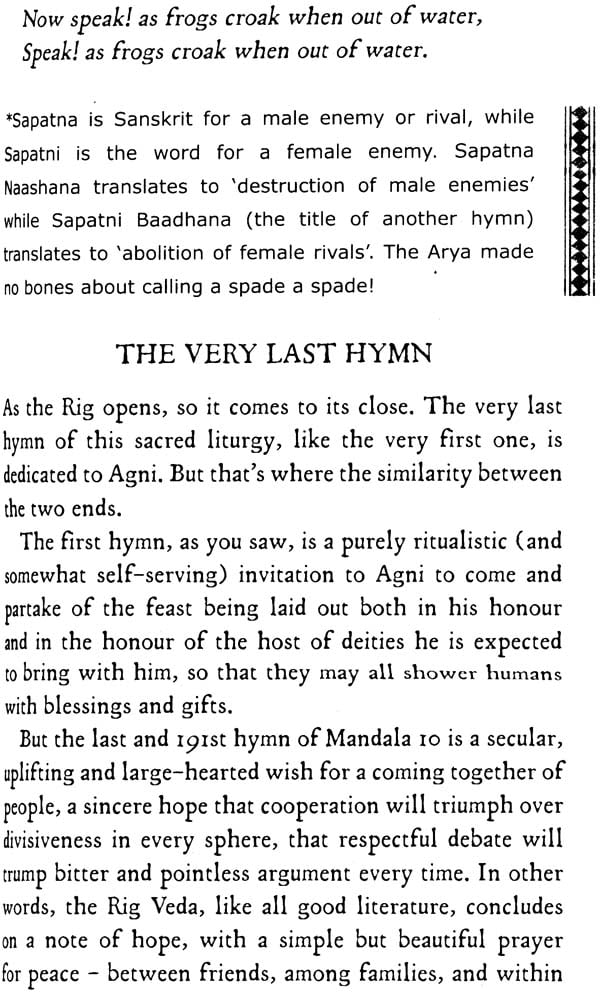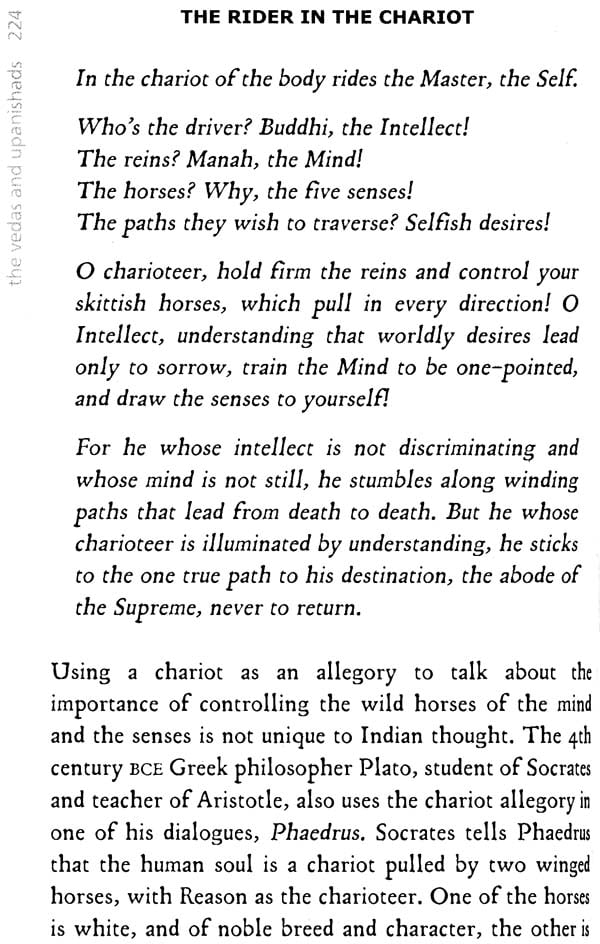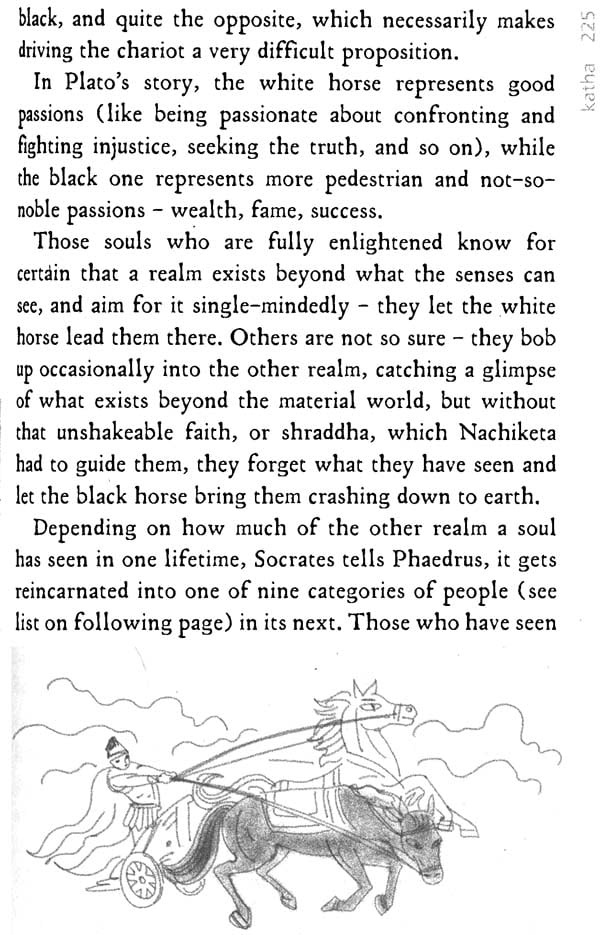
The Vedas and Upanishads
Book Specification
| Item Code: | NAO573 |
| Author: | Roopa Pai |
| Publisher: | Hachette India |
| Language: | English |
| Edition: | 2019 |
| ISBN: | 9789351952961 |
| Pages: | 425 (45 B/W Illustrations) |
| Cover: | Paperback |
| Other Details | 8.0 inch X 5.0 inch |
| Weight | 310 gm |
Book Description
ROOPA PAl is the author of several books for children, including the much-acclaimed, award-winning bestseller The Gita for Children. Her books, on topics as diverse as history, mathematics, science, economics and sci-fi fantasy, are enjoyed by adults just as much as they are by children.
Of all the Mahavakyas in the Upanishads, her favourite is 'Prajnanam Brahma - Knowledge is God'.
SAYAN MUKHERJEE is an illustrator living in Kolkata and working from his studio. After working in advertising for almost nine years, he went solo with his passion - illustrations. He loves children's books and loves to create art for kids. Besides Hachette India, he works with publishers like Penguin Random House India, Juggernaut, Tulika Books, Speaking Tiger and Pratham Books, among others. He has a number of sketchbooks and carries them wherever he travels, to preserve some beautiful memories.
BEFORE WE BEGIN Hello, hello! It's lovely to meet you!
You are standing there (or sitting here) reading this for one of two reasons. You have either:
(a) bought this book (or your parents have thrust it on you, believing this is an 'improving' book), OR (b) you are browsing through it at a bookstore or library, wondering if it's worth taking home.
Whatever your reason, chances are that, like many people, you only have a vague understanding of what the Vedas and Upanishads are. So let's very briefly 'define' the two first.
The Vedas are some of the oldest texts known to humankind. They are considered sacred texts and mainly comprise hymns of praise to the elements that sustain us - the sun, the rain, the fire, the wind, the water. Oh, and they came out of the land that we today call India. (To get the Veda 101, flip to The Know/edge, on page 1.)
The Upanishads ~re part of the Vedas, and therefore, also thought to be sacred. They are the last and newest 'layer' of the Vedas (this is India we are talking about, so even this 'new' layer was added about 2,700 years ago), but they are not hymns at all - in fact, many are stories, and / or conversations between teacher and student. And what are these stories and conversations mainly about? Unravelling the answers to very fundamental questions, the kind that human beings of all regions and races have struggled with forever. Questions that, astoundingly enough, we still have no clear answers to, despite all the progress we've made in the last 3000 years! (To get up close and personal with the Upanishads, go to The Secret, on page 123.)
What are some of these fundamental questions? Let's see now.
Where did the universe come from?
Who am I?
What is the purpose of my life?
Is there a God, and if so, who/where/in what form is He/ She/It?
What is death?
How can I be hundred per cent happy all the time? How do I decide what the right thing to do is in a particular situation?
(Are these questions that bother you? If yes, keep reading!)
Of all the different answers people across the world have come up with to these questions, it seems that the old, old answers of the Upanishads are among the most convincing, for a significant number of Indians - and non-Indians – swear by them to this day. If you'd like to find out what some of those answers are, this book is a good place to start. You can decide what YOU feel about them once you have finished reading. You may end up agreeing with the ancients, you may disagree vehemently, or you may be on the fence, BUT.- get this - the sages would be happy with you whichever you are - an agreeer, a disagreeer, or a doubter!
To the agreeers, the sages would say, 'Glad you agree! But agreeing is 'not enough. You have to try out our recommendations - on the secret of happiness, say - and find out if it actually works for you. Oh, and don't forget to come back and tell us - and everyone else - what you discover, for the point of knowledge is to share it.' To the disagreeers, they would say, 'Wonderful! Why don't you spend some time thinking about the same questions? Read other texts that have different answers, talk to tonnes of wise people who have other ideas, process all of it through your own head and heart - and when you think you have some answers, come back to us? We love a good debate!'
To the fence-sitters, they would say, 'Ah, sceptics! Those who question everything, who will not believe what someone else says is the truth, who are not content until they find the answers for themselves. We totally respect your kind - as long as you just don't sit there on that fence, but actively seek the truth yourself. We'd love to know what you find out, when you do!'
| Before We Begin | IX | |
| | ||
| | ||
| 1 | So What's the Big Deal about the Vedas? | 3 |
| 2 | Nature Songs of the Cattle-Herders | 23 |
| 3 | The Gods of Big Things | 42 |
| 4 | A-One, A-Two, A-One, Two, Three, Four | 58 |
| A Feast of Hymns | 89 | |
| | ||
| | ||
| 6 | So What's the Big Deal about the Upanishads? | 125 |
| 7 | Mastermind! | 143 |
| 8 | Shankara's Faves - The Top Ten Upanishads | 155 |
| 9 | Isha: The Upanishad of the Sameness of All Things | 178 |
| 10 | Kena: The Upanishad of 'Whence-Came- It-All'? | 193 |
| Katha: The Upanishad of the Secret of Eternal Life | 208 | |
| 12 | Prashna: The Upanishad of the Peepul Tree Sage | 235 |
| 13· | Mundaka: The Upanishad of the Big Shave | 257 |
| 14· | Mandukya: The Upanishad of the Frog | 274 |
| 15· | Taittiriya: The Upanishad of the Partridges | 299 |
| 16 | Aitareya: The Upanishad of the Glory of Being Human | 325 |
| 17· | Chandogya: The Upanishad of the Sacred Metre | 339 |
| 18 | Brihadaranyaka: The Great Forest Upanishad | 371 |
| And, in Conclusion | 405 | |
| Acknowledgements | 408 | |
| Select Bibliography | 411 | |
| Image Copyright Information | 412 |
